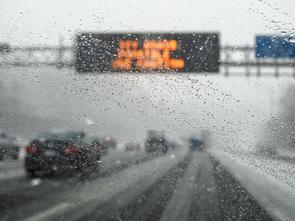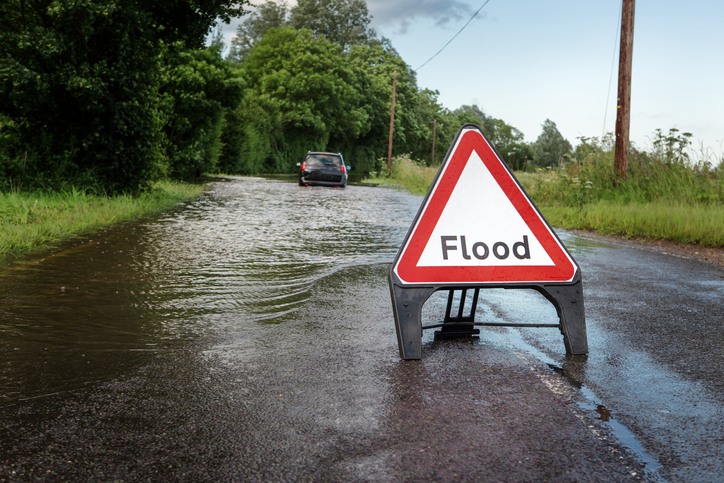How to Drive Safely in a Storm or Extreme Weather

Driving in conditions of strong winds or heavy rain can be relatively common in Ireland, especially during the winter months. Severe weather can significantly increase the risk of an accident for you, your passengers and other drivers on the road. Therefore, it should be your responsibility as a driver to be aware of some of the dangers related with driving in these conditions and the best ways to avoid an accident on the road.
First, we would advise that the best decision you can make is to avoid driving altogether and to stay off the road completely until the weather clears. But if driving is unavoidable, here are some of our tips for safe driving in storms or extreme weather conditions:
Driving in Heavy Winds
Wind may not seem like a big risk factor when it comes to driving but strong winds can be extremely dangerous especially in open spaces or motorways. The following tips can help you keep safe on the road during heavy winds:
Keep both hands on the wheel: Gusts of wind can occur at any time and can move or shake a car suddenly. It is important that you always have full control of the steering wheel to ensure the vehicle doesn’t veer or swerve.
Anticipate crosswinds: Be vigilant of open areas of the road or motorway that may be prone to crosswinds. Always reduce speed and keep your eyes on the road in these areas.
Be aware of larger vehicles: Large vehicles such as lorry’s and tractors can are more susceptible to high winds and may have difficulty with control and staying in lanes. Keep your distance from these vehicles and do not attempt to overtake.
Look out for debris: Tree branches and other objects can be blown onto the road during a storm or high winds, always be on alert for anything that may blow in your way.
Avoid parking under large trees or power lines: When you get to your destination try to avoid parking under or in front of any large object that can be blown over in heavy winds and damage your vehicle.

Driving in Rain
Go slow: This may sound like a no brainer, but speed is a serious factor in wet conditions. Speed limits are for normal road conditions, so you should adjust them to ensure you can stop comfortably.
Manoeuvre lightly: Abrupt manoeuvres will unbalance the car, so steer, brake and turn lightly.
Don’t use cruise control: Using cruise control is a great feature when its dry, but when it’s wet the chance of losing control greatly increases. To prevent this happening you might need to reduce your speed by taking your foot off the accelerator which can’t be done when cruise control is engaged.
Use the middle lane: A few inches of water can cause engine damage or aquaplaning. Roads usually slope to the sides so puddles can form there, so by using the middle lane you can minimise the risk of hitting these and continue on safely.
Keep lights on low beam: When your lights are on high-beam, they can actually reflect off the rain and make your vision much worse.
Don’t open the bonnet if you do breakdown: If you are unfortunate enough to break down, don’t open the bonnet in the rain while you wait for the roadside assistance to arrive. Wet conditions can soak the electrics, making it more difficult to start the engine.

Driving in Floods
Check the depth: Don’t attempt to go through more than 6 inches of standing water or 4 inches of moving water. Watch other traffic attempt the flooded area if needs be.
Drive slowly and steadily: Crawl through the water very slowly in first gear. Try to stay on the crown of the road and keep the revs up. Once through, let oncoming traffic pass you and then test the brakes.
Don’t drive fast: If you speed through a flooded area you could risk aquaplaning and lose control. If you do aquaplane, hold the wheel lightly and lift off the accelerator until you regain control. Air intake on many cars is also low at the front engine bay so only small amounts of water can be sucked in before causing damage.
Stop water getting into the exhaust by keeping the revs high: Do this by slipping the clutch. This will prevent the engine from stalling.
Carzone - 27-Sep-2023


